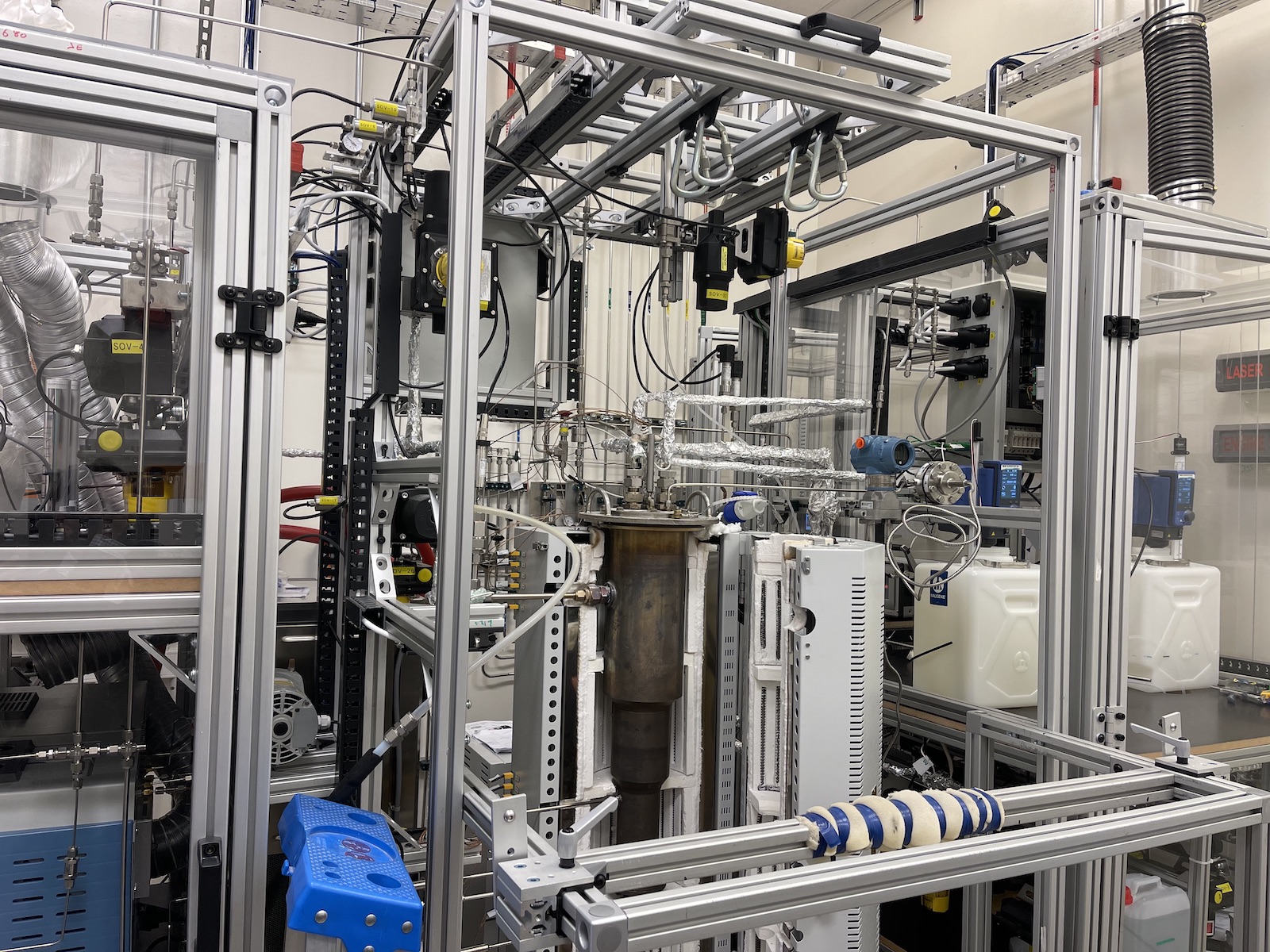KAUST and Aramco crack one-step Crude-to-Chemicals

“Pilot plant for the one-step Crude to Chemicals Refining Technology within the KAUST Catalysis Center, KAUST, Thuwal”
Researchers at King Abdullah University of Science and Technology (KAUST), in partnership with Aramco, have demonstrated a technology that performs multiple upgrading steps at once, resulting in the stable conversion of crude oil to light olefins in a single-reactor system. Light olefins such as ethylene and propylene are some of the important building blocks for the plastic, construction and textile industries.

Donal Bradley, KAUST Vice President for Research
Initial findings from the collaborative research on the one-step C2C technology have recently been published in Nature Catalysis. The researchers demonstrated that the direct transformation of crude to chemicals in a one-step process is possible. KAUST and Aramco will continue to advance the development of this technology as a potentially competitive alternative to conventional refining practices.
"Crude-to-chemicals technologies may offer the potential to facilitate a paradigm shift in the way oil is utilized," said KAUST Vice President for Research Donal
Bradley. "Such technologies may offer an incentive to maximize production of materials used in daily life, over the production of fuels, with very important economic and sustainability benefits."
Related
- Nature Catalysis paper
- The Saudi
Gazette
- Hydrocarbon
Engineering
- Zawya
Oil has been a major source of the world's fuel for decades, but changing trends and the emergence of alternative energy sources means that chemicals represent one of the biggest prospects for oil in the future.
Aramco is already pursuing growth opportunities in petrochemicals and the combination of new multifunctional catalysts and new reactor concepts may offer the potential to reduce cost of production.

Mr. Ahmad O. Al Khowaiter, Aramco Chief Technology Officer
"This breakthrough catalyst and reactor innovation to convert crude oil to chemicals in a single step is the initial outcome of our long-term research collaboration with leading researchers at KAUST, where the focus has been to fundamentally reimagine crude oil conversion chemistry," said Mr. Ahmad O. Al Khowaiter, Aramco Chief Technology Officer. "This collaborative research complements other competitive crude-to-chemicals technology approaches the company is pursuing to enable us to not only increase the quantity of high-value chemicals we produce, but at the same time reduce the carbon footprint associated with the use of our oil."
C2C has been identified in Saudi Arabia's Vision 2030 as a strategic pillar of the National Industrial Development and Logistics Program, with the potential to create jobs in the chemicals sector and support the themes of a vibrant society, a thriving economy and an ambitious nation.

Jorge Gascon, KAUST Professor of Chemical Engineering and Director of the KAUST Catalysis Center
"Altogether, our results demonstrate that the search for alternative reactor-engineering concepts, when accompanied by complementary multifunctional catalyst development, are worth exploring for process intensification," said KAUST Professor of Chemical Engineering and Director of the KAUST Catalysis Center, Jorge Gascon. "This new process has the potential to reduce the need for distillation and steam cracking units."
The research has shown that technology can modernize to meet today's needs, while recognizing that more can be done for the future. Ongoing optimization of catalyst formulation and process demonstrates that improvement in terms of performance and application is still possible.
Related KAUST stories
- Answering the call for carbon management
- ANSYS, Saudi Aramco and KAUST achieve a new supercomputing milestone
- KAUST and Aramco break ground
-
Bradley named NAI Fellow

